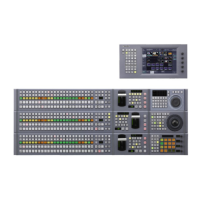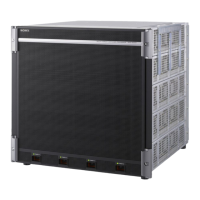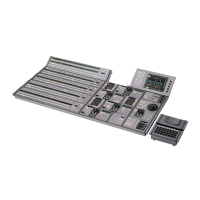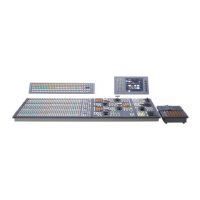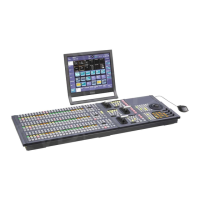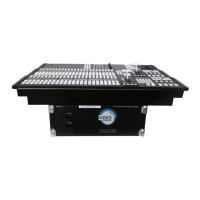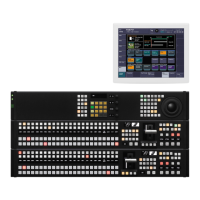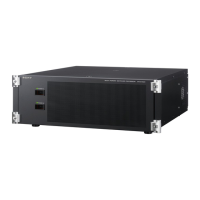Chapter 3 Signal Selection and Transitions
181
Executing a Transition
carried out.
Moving the fader lever even a little synchronizes the fader lever position
with the transition state, and you can move the fader lever either in the
forward direction or in the reverse direction.
Depending on the Setup settings, the transition may be executed at the
instant you press the [PTN LIMIT] button, and the button goes off. In this
case, execution continues for the time specified by the dedicated transition
rate in the menu setting, as far as the state of the next transition.
For details of the setting, see “Settings Relating to Keys, Wipes, Frame
Memory and Color Correction (Key/Wipe/FM/CCR Menu)” in Chapter 20
(Volume 3).
To set the transition rate when the pattern limit is released
1
In the <Pattern Limit Release> group of the Edge/Direction menu, select
one of the following.
Auto Trans Rate: Use the transition rate set in the transition rate control
block
Independ Trans Rate: Independent transition rate
2
If you selected “Independ Trans Rate” in step 1, adjust the following
parameter.
Executing an Auto Transition
The following two modes can be used for auto transition.
Cut
A cut switches instantaneously from the current video to the new video. When
the next transition is a key transition, the key cuts in or out instantaneously.
Auto transition
The transition from the current video to the new video is carried out
automatically at a constant rate, using the transition effect selected as the
transition type.
You can set the transition rate in advance. (See “Setting the Transition Rate”
(page 173).)
Knob Parameter Adjustment Setting values
1 Transition Rate Independent transition rate 0 to 999 (frames)

